
Top 10 Food Trends
A dramatic shift in food preparation practices, a Millennial baby boom, and a strong focus on healthful, natural, and nutritional offerings are resetting priorities for food and beverage marketers.
Article Content
Despite the recent media preoccupation with clean labels and free-from foods, the food industry remains driven by convenience. Ready-to-drink tea and coffee—up 19.5% and 14.6%, respectively, in dollar sales for the year ended (Y/E) Oct. 1, 2016—were among the top 10 fastest-growing grocery categories last year. Sales of lunch combinations (e.g., premade sandwiches, snacks, and cheese/cracker kits) grew 14.4% (Figure 1, Nielsen 2016).
In the fresh aisles, strong performers included value-added fruit and vegetables, side dishes, food trays, and prepared meats (Nielsen 2016). Sales of specialty gourmet foods topped $94 billion at retail in 2015, up 19.4% versus 2013 (SFA 2016a).
Nearly six in 10 consumers enjoy cooking; two-thirds of Millennials feel that way (Harris 2016). Forty-eight percent of adults describe themselves as a foodie (Packaged Facts 2016a). Deli sushi, with sales up 16.4%, and vinegar/cooking wine, up 11.9%, were also among the top 10 best-selling foods last year (Nielsen 2016).
In 2016, 82% of U.S. households prepared their main evening meal at home five or more nights a week; 38% did so more often than the year before (FMI 2016a). Brown-bagging is back. In 2016, 39% prepared lunch at home but ate it at work or on the go (FMI 2016a). Forty-nine percent of all eating occasions are snacks; afternoon remains the largest traditional snack daypart (Hartman 2016a).
Four of every five shoppers are concerned about the nutritional content of their food, consistent across all generations (FMI 2016a). One-third (32%) switched to a healthier yogurt in the past year; for milk, the percentage of those switching to healthier is 27%; for bread, 26%; cold cereal and oil, 22%; and pasta and eggs, 21% (FMI 2016b).
Two-thirds of Millennials are familiar with “minimally processed foods” and “eating clean”; for the population overall, the figures are 51% and 41%, respectively (FMI 2016b). Clean menus/natural ingredients are the second-hottest culinary concept for 2017, right after hyperlocal sourcing (NRA 2016).
In 2016, 15% of consumers shopped for groceries online occasionally; 5% did so fairly often (FMI 2016a). Marketdata Enterprises estimates the home meal delivery market at $3.8 billion in 2016; prepared meals/kits at $1.5 billion; diet prepared foods, $910 million; and premium meats, appetizers, and desserts via mail order, $1.4 billion.
Here’s a look at the top 10 trends shaping today’s food and beverage marketplace.
1. Prep It
Semi-prepared foods now dominate home dinner preparation. In 2016, 53% of shoppers used some partially prepared items versus 35% who cooked mostly from scratch (Figure 2, FMI 2016c).
Nearly half (45%) of shoppers buy heat-and-eat meat/poultry at least once a week; 40% buy precooked, ready-to-eat products (FMI 2017). Forty-two percent of grocery meat managers reported an increasing demand for value-added fresh meats/poultry (e.g., premarinated cuts or kabobs) in 2016 (Horovitz 2016a).
Nearly four in 10 Millennials use prepared side dishes often or very often, double any other age group (Harris 2016). One in three consumers under age 45 uses packaged meals or frozen stir-fry kits; one in five uses refrigerated heat-and eat potatoes/pasta (MSI 2016). With nearly half of all users doctoring these products by adding seasonings or ingredients, it’s clear the convenience category needs a culinary upgrade (MSI 2016).
Just over half (56%) of adults bought deli prepared meal items last year (FMI 2016c). Meatloaf, guacamole, barbecue chicken, pulled pork, pasta, breakfast items, Mexican entrées, and appetizers posted double-digit sales growth (IRI 2016a).
Four in 10 U.S. households use frozen meals/entrees; nearly half keep them on hand (Packaged Facts 2016b). Sales of single-serve meals grew 2.3% for the 12 weeks ended Dec. 25, 2016; multi-serve meal sales were up 1.5%, per Nielsen (Leathers 2017a).
Sales of clean/preservative-free frozen meals reached $2.3 billion, +5.7%, for Y/E Oct. 2, 2016; sales of all-natural frozen meals were $1.3 billion, +11.6%; gluten-free, $797 million, +33.4%; organic, $337 million, +30.7%; and non-GM, $350 million, +39.8% (Hale 2016a,b,c,d,e).
Frozen Asian meal/entree sales rose 3.1%, Italian meals were up 3.2%, and Mexican meals were up 6.4% for Y/E Sept. 9, 2016. Asian side dish sales jumped 23%; frozen side dishes overall grew 12% (Blank 2017).
Kahiki’s Asian frozen Savory Sidekicks side dishes made with “100% natural ingredients” are right on target. The demand for more Asian and Mexican family-sized frozen meals is also on the rise. P.F. Chang’s added a much larger package to its Home Menu Skillet line.
One-third of shoppers are very interested in fresh food kits (FMI 2016c). With four in 10 Millennials having prepared pizza from scratch or from store-bought dough last year, pizza kits are a big idea (Mintel 2016a).
With Millennial households most likely to be home to a blender, panini press, soda maker, pizza oven, or electric rice cooker, products that use these appliances should find a welcome market (NPD 2015). One in 10 meal preparers uses a crock-pot often or very often (Harris 2016). Eight in 10 food shoppers feel knowledgeable about crock-pot cooking, more than grilling or barbecue (FMI 2016a).
With consumers using the microwave more frequently for cooking dinner, microwave instructions are more important than ever. Those aged 70-plus are the most likely to do so, followed by Millennials (Harris 2016).
Three-quarters of homes own a grill, and the majority now grill eight months per year (HBPA 2015). Millennials are by far the most likely to grill (Harris 2016).
Lastly, one of the most innovative trends is to suggest unique preparation instructions for traditional products. Evol brand marketers suggest preparing their gourmet frozen burritos on a panini press or on a grill. Outdoor breakfast grilling is another hot trend (HBPA 2016).
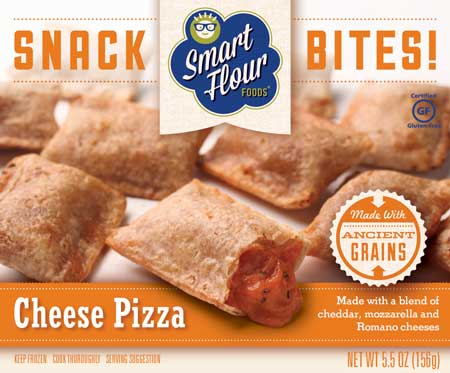 2. Lifestyle Foods
2. Lifestyle Foods
With Americans eating alone on 46% of all eating occasions and 28% of U.S. households now comprised of an adult living alone, it’s not surprising that single-serve packaging and individually portioned multi-packs are increasingly in demand. On average, 53% of the population eats breakfast alone; 45% dine alone at lunch; and 24% do so at dinner (Hartman 2016a).
Single-serve packaging was the No. 1 unmet need in the fresh meat case in 2016 (Horovitz 2016a.) Sales of single-serve indulgent bakery items jumped 18%, and single-serve fresh fruit sales increased by 9.9% in 2015 (IRI 2016b).
At the same time, there is a demand for family-sized meals and packages of individually portioned items. House-holds with three or more children are the most likely to use frozen snacks, breakfast foods, and family meal entrees (Mintel 2016b,c).
Sales of frozen handheld entrees/meals reached $2.5 billion for Y/E Oct. 2, 2016 (Leathers 2017a). In 2016, 52% of consumers ate a frozen breakfast sandwich, 38% had a frozen handheld pocket meal, 38% ate a frozen burrito, and 36% consumed a frozen sandwich.
Four in 10 consumers would buy more frozen handhelds/bite-size appetizers/snacks if they had internationally inspired flavors, 36% would go for gourmet options, 32% seek single-serve packaging, and 29% are interested in restaurant quality (Mintel 2016b). Handheld Aussie Pies and evol frozen breakfast Scramble Cups are highly innovative market entries.
Ethnic breakfast foods are a missed opportunity and rank eighth overall among the hot culinary trends for 2017 (NRA 2016). With condiments/spreads important to three-quarters of breakfast handheld users, marketers should consider including signature sauces in the package (Technomic 2015).
Half of adults ate frozen appetizers/snacks as a meal replacement in 2016; 47% for lunch, 46% as part of a meal, 45% for dinner, and 30% for breakfast (Mintel 2016b). Hispanics and households with kids are the most likely to substitute frozen snacks for meals (Mintel 2016b).
With 74% agreeing that frozen handhelds/snacks are a convenient snack at work, single-serve, on-the-go packaging could send sales of frozen snacks soaring. Half (47%) of shoppers buy snacks to take to work/school (Acosta 2016).
A new early morning snacking occasion—prior to breakfast—is being driven by Millennials and households with kids. In 2016, one in five consumers snacked in the early morning hours (IRI 2016c).
Nutrients and protein are important breakfast criteria (FMI 2015, Jargon and Gasparro 2014). Energy, mental focus, feeling full, and helping to manage weight/hunger are other important early morning goals (IFIC 2015). On average, adults ate breakfast 5.1 times per week in 2016 (FMI 2016a).
After burritos, consumers have the most interest in breakfast tacos, pizza, burgers, and stir-fry (Datassential 2016). More than one in five consumers often eat frozen breakfast foods for dinner or lunch; 27% eat them on the go and 25% as snacks (Mintel 2016c).
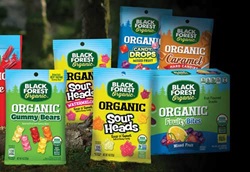 3. Kid-Specific
3. Kid-Specific
Products for babies, toddlers, and kids will be back in business as Millennials continue to drive a new baby boom. In 2015, 4 million babies were born in the United States. Moreover, with growth in the female population concentrated between the ages of 24–39 from 2015–2020, the number of children aged 1–3 is projected to grow by 6.7% (CDC 2016, Goldman Sachs 2016).
Sales of infant formula—the largest health/wellness packaged foods category in the world with sales of $47 billion in 2015—are projected to grow at 9.1% per year through 2017 (Euromonitor 2016a).
Digestive health/gut health, brain health, DHA, vitamin-/mineral-fortified, and eye health are the top benefit claims on baby formula; organic, non-GM, and all-natural formulas continue to dominate sales (Innova 2016).
The addition of HMO (human milk oligosaccharides) to Abbott’s Similac Pro-Advance and Pro-Sensitive infant formula to boost immunity is the latest nutritional innovation. Gerber’s new non-GM Good Start is formulated with “comfort proteins” that are “easy for tiny tummies to digest.”
While parents expect teens to eat what the rest of the household eats, kid-specific products are in high demand by parents of those aged 6–12 (Packaged Facts 2016a). In 2016, 42% of all households with kids ate dinner together three nights per week or less often. Not surprisingly, one in five Millennial parents wants more kid-specific meals (Harris 2016).
Healthful kids’ meals, whole grain items, gourmet kids’ meals, kids’ entrée salads, and fruit/vegetable side dishes are among the hot culinary trends for kids’ foods for 2017 (NRA 2016).
Prepared lunch kits top the list of the most used kid-specific foods, followed by fruit snacks, toaster pastries, nutrition bars, breakfast pastries, snack cakes, frozen pizza, orange juice, chips, and cold cereal (Packaged Facts 2016a).
Households with kids account for 40% of all snack sales. Frozen entrees/appetizers, egg rolls/wonton/wraps, popcorn, dried meat snacks, specialty butters, and salsa are among the top 10 favorite snacks in households with kids older than age 5 (IRI 2016c).
Half (49%) of moms say that nutrition is the top food selection factor; 23% want foods with hidden vegetables (Packaged Facts 2016a). Six in 10 moms with kids under age 6 make a great deal of effort to choose non-GM products, 46% seek organic, and 33% look for all-natural; 45% of those with kids aged 6–11 look for organic, and 30% look for all-natural (Packaged Facts 2016a).
Households with kids are four times more likely to use a food processor or blender, three times more likely to cook on the grill or use a slow cooker, and twice as likely to use preprepared side dishes (Harris 2016).
Packaged Facts (2016a) projects the kids’ food and beverage market will reach $42 billion by 2019.
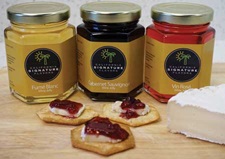 4. The New Nationalism
4. The New Nationalism
Consumers’ newfound pride in all things American is going to drive unprecedented opportunities for American regional cuisines, ingredients, and comfort foods as well as rejuvenate country-of-origin concerns.
More than one-third (36%) of specialty food shoppers bought gourmet regional American foods/ingredients last year (SFA 2016b). Southern/U.S. regional ranks fourth, following Mexican, Italian, and Chinese, as the cuisine that is most sought-after among supermarket shoppers, with slightly higher appeal to men (42%) versus women (32%) (FMI 2015).
Adults under age 45 are much more likely to frequently eat American regional cuisines than their older counterparts. Southerners and households with kids are also more likely to do so (NRA 2015).
Watch for regionalized flavors and preparations for fish/chips (e.g., walleye or catfish). French toast, bacon, mashed/pureed potatoes, barbecue, and traditional comfort foods (e.g., pot pies, meatloaf, or chicken-fried steak) are cited as perennial favorite culinary trends for 2017 (NRA 2016).
Blake’s frozen pot pies/one-dish meals, such as Chicken Noodle Casserole, are antibiotic- and hormone-free and available in a new family size. Sea Watch International offers Deep Fried Clam Chowder nuggets.
Right after spicy/hot flavors, consumers cite authentic regional U.S. flavors as the types of sauces/marinades/seasonings they prefer (Mintel 2015).
City descriptors (e.g., Memphis Fried Chicken) are also in vogue. Home Run Inn Chicago’s Best All Natural Premium Pizza has been among the top performers in the frozen pizza case. Handheld JJ’s Bakery Duos now come in a Boston Cream Pie variety.
Hearty country fare (e.g., lumberjack breakfast/fry-up) and breakfast hash are hot culinary breakfast trends for 2017 (NRA 2016).
American regional signature cocktails and locally produced wine spirits/beer are among the top five hot alcoholic beverage trends for 2017 (NRA 2016). With 38% of shoppers defining local as “from my state,” expect state-branded foods to continue to grab the spotlight (FMI 2015).
Lean Cuisine Marketplace macaroni and cheese is made with “Vermont White Cheddar.” The tagline for Claxton Choice’s Georgia Peach Preserves reads “fine products of the South.” Corto Olive Co.’s Truly Extra Virgin Olive Oil touts its family roots as well as the fact that it is California grown. Carolina Gold rice from Anson Mills is a cornerstone of low country cooking.
Two-thirds of chefs cited farm/estate-branded among the top culinary trends for 2017 (NRA 2017). Maple Hill Creamery in New York, a supplier of dairy products from 100% grass-fed cows, includes a network of 85 family farms.
Hydroponics, vertical farms, and hot house–grown have the potential to deliver the ultimate local products directly to supermarkets regardless of weather conditions. Local sourcing is projected to be the second-largest hot culinary trend in 10 years, right after environmental sustainability (NRA 2016). U.S. farmers remain strong food product spokespersons; 53% of shoppers believe farmers are a strong ally in helping them stay healthy (FMI 2016a).
Two-thirds of shoppers are very interested in meat/poultry raised in the United States; 59% of shoppers want more American-grown produce (FMI 2016d, 2017). Six in 10 shoppers believe that foods from China pose health risks. Florida’s Natural orange juice promotes the fact that it is “100% made in the USA.”
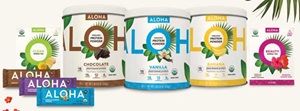 5. Nutritionals
5. Nutritionals
The demand for a simpler way to ensure a healthy lifestyle continues, and highly fortified nutritionals are getting the nod. For the first time, nutritional/supplement drinks, bars, and meal replacements were among the top 10 fastest-growing food/beverage categories in the United States, up 9.8% for Y/E Oct. 1, 2016 (Nielsen 2016).
Nearly two-thirds (64%) of adults tried to get more protein in 2016; 60% tried for more fiber; 59%, whole grains; 56%, vitamins/minerals; 48%, potassium; 37%, omega-3s; and 33%, probiotics (IFIC 2016).
In 2016, sales of dietary supplements reached a new high of $41.2 billion, up 6.2%, driven by increased use among Millennials (NBJ 2017). Three-quarters of adults took a multi-vitamin in 2016; 37%, vitamin D; 34%, vitamin C; 29%, calcium; 24%, a B vitamin; 20%, omega-3s; 16%, vitamin E; 15%, magnesium; and 13%, probiotics (CRN 2016).
Protein drink sales topped $2.3 billion; meal replacements, $4.9 billion; and nutrition bars, $4.6 billion (NBJ 2017). For Y/E Oct. 2, 2016, unit sales of Slim Fast weight control nutritional liquid/powder jumped 281% in mass channels; Ensure Active sales were up 141%; and Premier Protein, up 99%. Quest nutritional bars were up 74% in unit sales (IRI 2016d).
In terms of dollar sales, healthy snacks, followed by frozen entrees, salty snacks, and frozen breakfast sandwiches are the largest dollar categories with products carrying a protein claim; hot cereal, frozen appetizers/pizza, and specialty grains were the fastest growing, per Nielsen (FMI 2017).
Protein’s role in better aging is getting attention. Seven in 10 adults aged 50-plus are aware of losing muscle with age; 34% are extremely concerned about it (Abbott 2016). Ensure Enlive carries an “all in one” claim for bone, muscle, heart, immunity, and digestion.
Half of consumers are very/extremely interested in replacing caffeine and traditional energy sources with natural options such as guarana (HealthFocus 2015).
Snack nutritionals are a missed opportunity. Six in 10 consumers want snacks that deliver an energy boost; 57% seek snacks that contain vitamins/minerals; and 52% want snacks that have health benefits beyond basic nutrition (IRI 2016c).
A new generation of fit consumers who embrace regular exercise will continue to drive the $37 billion sports nutrition market mainstream (NBJ 2017). More than half of adults exercise three or more days/week for more than 30 minutes (Gallup 2016).
Cultures, vitamins/minerals, botanicals/bioactives, and poly/oligosaccharides will be the fastest-growing global specialty food/beverage ingredients through 2019 (Euromonitor 2016b). Probiotics will be the fastest-growing supplements, reaching $3.1 billion in sales by 2020; fish/plant oils will reach $1.4 billion in sales (NBJ 2017).
More than half of consumers (52%) are interested in buying foods/beverages that help maintain good eyesight; 49% seek products to boost metabolism and/or remove toxins from the body; the same number, 49%, look for products to help improve mental energy/concentration; and 46% look for products that promote healthier skin (HealthFocus 2015).
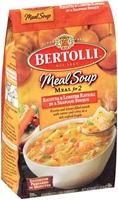 6. Dinner Redesigned
6. Dinner Redesigned
A typical home dinner for 86% of shoppers includes a main dish; for 61%, it includes a vegetable; for 48%, a salad; and for 44%, a dessert (Acosta 2016).
Meat and poultry are making a steady return to the center of the plate, likely due to lower prices. In 2017, 3.8 meals per week on average contain meat or poultry—the highest proportion in five years. Three-quarters eat meat/poultry at dinnertime at least three days a week; 20% do so six days per week (FMI 2017).
Eight in 10 households prepare meals based on alternative proteins other than meat or poultry at least once a week. Variety, cited by 54%, is the main reason for doing so; 45% cite health reasons (FMI 2017).
Fish is the most frequently served meat alternative, cited by 57%, followed by eggs, 52%; beans/lentils/legumes, 37%; quinoa/plant-based protein, 18%; seeds/nuts, 17%; veggie burgers, 13%; and soy/tofu, 8%. Just over one-quarter (26%) of households are regularly eating more fish or seafood (FMI 2017).
New cuts of meat continue to add excitement at mealtime; Vegas strip or Newport steaks are among the trending options for 2017 (NRA 2016). Bourbon maple, Applewood smoked, buffalo ranch, and orange have been among the most successful new flavors for rotisserie chicken (FMI 2016c). Watch for street food–inspired dishes—the second hottest culinary trend overall for 2017—to move to the center of the plate (NRA 2016).
Frozen evol Street Tacos are a timely new entrée. Grecian Delights Foods’ Opaa! Premium Gyros Kit includes pocket pita bread and features no artificial ingredients or preservatives. Twenty-eight percent of adults are interested in trying Vietnamese banh mi street sandwiches (Datassential 2017).
Vegetable “carb substitutes’ are another main dish culinary trend for 2017; examples include pasta dishes made with Del Monte Fresh Produce Vegetable Noodles in varieties that include zucchini and sweet potato. Atkins Nutritionals has introduced frozen mail order meal kits with simple low-carb solutions for breakfast, lunch, dinner, and snacking.
Six in 10 consumers are interested in trying more bowl meals; 52% and 36%, respectively, would try paella or the spicy Korean rice and vegetable dish “Bibimbap,” often served sizzling in restaurants (Datassential 2017). Wicked Kitchen’s frozen meals such as Korean-Style Beef Noodle Bowl are designed to woo Millennials.
Premium and superpremium pizza, with sales up 281% and 291%, respectively, for Y/E Sept. 10, 2016, are driving the frozen pizza category (Leathers 2017b). California Club, Tostada, and Blue Cheese/Pear are among the favorites at California Pizza Kitchen; popular deli pizza varieties include Southwest chicken; pesto, and Sicilian (FMI 2016c). Monterey Jack, Asiago, Gouda, fontina, and provolone are among the fastest-growing pizza cheese varieties (Technomic 2016a).
Wal-mart’s Great Value line includes a Pizzadilla, a cross between a quesadilla and pizza, as well as a Street Kitchen Mexican Scratch Kit.
Soups are also making their way to the dinner table. Bertolli restaurant-quality frozen Meal Soups and Cuisine Adventure’s authentic Vietnamese Chicken PHO Soup in a bowl are innovative offerings.
Four in 10 consumers prepared Italian meals at home from scratch; 29% prepared Mexican; and 11%, Chinese (Mintel 2016d).
For the first time, ethnic condiments and sauces, rather than a cuisine, topped the list of hot ethnic culinary trends for 2016; this aligns perfectly with Millennials’ quest for simpler ways of adding excitement and flavor by adding sauces, rubs, and spices (NRA 2015). Ethnic spices ranked 11th in terms of the top overall culinary trends for 2017 (NRA 2016).
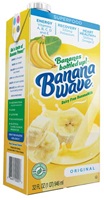 7. Ag Alternatives
7. Ag Alternatives
Americans continue to experiment with plant-based meals, eating regimens, and meat/dairy alternatives. One in five are regularly eating more meatless meals/meat alternatives; 47% do so occasionally (FMI 2017). Five percent of grocery shoppers were on a vegetarian diet last year, 2% were on a vegan diet, and 2% were avoiding dairy (FMI 2016b). Four in 10 chefs still cite vegetarian and vegan cuisines as hot culinary trends for 2017; protein-rich grains/seeds ranked as the 17th overall most important trend (NRA 2016).
Sales of plant-based foods and beverages topped $4.9 billion, up 3.5% for Y/E June 12, 2016 (SPINS 2016). Dominated by almond milk, dairy alternative beverages are by far the largest category, with $4.2 billion in sales. Other nuts, as well as the use of high pressure processing, will drive additional interest. A Cold Brew Cashew Nut Latte is available from NüMoo Foods.
Sales of meat alternatives increased 3.8% to $595.6 million, with refrigerated products growing faster than frozen—8% versus 2% (SPINS 2016). Gardein’s meat-free Crispy Chick’n Sliders are a convenient and healthy snack. Morning Star Farms’ alternative Meal Starters include Steak Strips and Hickory BBQ Riblets.
Sales of cheese alternatives grew 13.3% to $96.1 million, led by spreadable varieties. Daiya Foods offers a dairy-free New York Cheezecake. Kite Hill uses cultured almond milk to formulate its ravioli products.
Sixty-four percent of consumers say they are very or extremely interested in replacing traditional herbs/spices with those that are known for health benefits (e.g., turmeric); 60% are interested in substituting ancient varietals for traditional grains; 58% like the idea of replacing white flour with nut, rice, or ethnic flours; and 54% look to replace traditional seeds with chia or hemp (HealthFocus 2015).
One in five adults seek out foods/beverages formulated with vegetarian protein; among those aged 25–39, the figure is 37%. In 2016, nuts/seeds were most often used in vegetarian protein formulations, followed by soy protein (Packaged Facts 2016b).
Over the past four years, claims related to chia, amaranth, quinoa, and kamut have been among the fastest-growing grain-based health/wellness claims. Over the past year, claims related to spelt and the descriptor corn-free enjoyed double-digit growth (Hale 2016f).
Seventy-five million households buy nuts as a healthy snack; 60 million purchase granola bars and other bars; 29 million, trail mixes; and 27 million, fruit snacks (Packaged Facts 2016c). General Mills has invested in D’s Naturals, a plant-based protein bar marketer. Makers of Nature’s Path Qi’a Superflakes claim to offer the industry’s first organic superfood and sprouted grain flake cereal.
Last year six in 10 shoppers (62%) bought a food product because it contained fruits/vegetables (Nielsen 2017a). Among fruits, fresh tangerines, limes, kiwi, apricots, and mangoes posted the biggest sales gains last year; vegetables that posted the biggest gains include brussels sprouts, asparagus, squash, and beets (IRI 2017).
Specialty produce purveyor Frieda’s is featuring mini kiwi buds, mini squashes, watermelon/radish hybrids, and seedless lemons. Truly Good Foods offers light and crunchy Okra Snacks.
Mushrooms are among the new superfoods—especially for immune-boosting benefits—as is apple cider vinegar, and matcha. Green food power—seaweed, algae, spirulina, and grass—continues to grab consumer attention.
Posole, tomato, tofu, bisques, and miso are the fastest-growing soups on restaurant menus, per Datassential (Thorn 2017). Better for You Foods’ Poppy Seed & Onion Bread Bowls for soup or dips are perfect for entertaining.
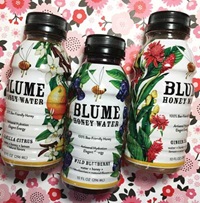 8. Upgrading
8. Upgrading
It’s time to seriously consider a culinary food product upgrade across the board. In 2016, for the first time, men were more likely to buy specialty foods than women. Nearly half of parents’ food dollars went for gourmet fare (SFA 2016b).
Consumers who earned from $25,000 to $74,900 annually bought an average of 6.5 specialty categories (SFA 2016b). Moreover, Millennials aged 25–44—the heaviest users of gourmet products—are driving demand for more specialty products across nontraditional channels (e.g., supercenters and convenience stores) (SFA 2016b).
With sales in convenience stores up 13.1%, sushi has outpaced bakery snacks (+11.6%) and breakfast wraps (+10.3%) (Anon. 2016). In 2016, pasta was the fastest-growing specialty category, with sales up 28%, followed by pasta/pizza sauces, +26%; nonalcoholic beverages, +25%; cereal, +23%; frozen/chilled meals, +20%; condiments/dressing, +19%; appetizers/antipasti, +18%; and nonchocolate candy, +17% (SFA 2016a).
Cheese remains the largest specialty category, with sales of $4.3 billion in 2015, followed by frozen/refrigerated, specialty meats, poultry, and seafood, $3.6 billion; chips/snacks, $3.4 billion; coffee, $3.1 billion; bread/baked goods, $2.6 billion; candy/individual snacks, $2.2 billion; frozen lunch/dinner entrees, $1.9 billion; condiments, dressings, and marinades, $1.8 billion; yogurt/kefir, $1.8 billion; and refrigerated entrees/prepared meals, $1.7 billion (SFA 2016a).
About one-third of specialty consumers buy cheese, ice cream/frozen desserts, chocolate, coffee, and oils/vinegars; one-quarter buy baked goods, pasta and sauces, beverages, tea, snacks, and yogurt (SFA 2016b).
In the traditional deli, sales of sliced salami jumped 18%, specialty deli meats sales were up 8%, and Italian meat sales increased by 7% in 2016, per Nielsen. Pimento, mascarpone, some queso varieties, Cotija, Asiago, pecorino, Romano, and Edam were among the top-selling natural cheeses (IDDBA 2017).
Campbell’s has upgraded soup with its Well Yes! line, which includes Italian Vegetable with Farro and Black Bean with Red Quinoa varieties. Hershey recently rolled out a Cookie Layer Crunch bar that combines creamy and crunchy taste sensations.
The explosive growth in home entertaining is also driving demand for more upscale fare. The number of meals eaten at another person’s home jumped 19% between 2015 and 2016 (NPD 2016b). One-third of adults buy gourmet items for a special occasion; one in five buy them to have on hand for unexpected guests (SFA 2016b).
Twenty-seven percent of shoppers are interested in complete upscale meal solutions for secondary holidays such as Valentine’s Day, St. Patrick’s Day, or Father’s Day (FMI 2017).
One in five grocery deli department managers are working to expand their catering operations; one in five are adding antipasto bars (Horovitz 2016b).
Two-thirds of those who have guests over serve snacks; 36% buy gourmet snacks for everyday use. Sales of gourmet/specialty frozen snacks jumped 13.6% over the past two years; unit sales climbed by 15.7% (SFA 2016b). Gourmet frozen snack/appetizer sales account for 10% of the frozen appetizer category (SFA 2016a). Wholly Guacamole offers a new Layered Dip; Wellsley Farms debuted frozen Artisan Appetizers.
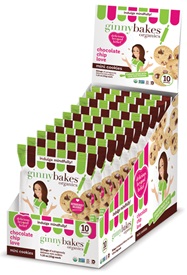 9. Claim It . . .
9. Claim It . . .
Savvy marketers are turning to package claims/copy to convey their benefits more quickly to consumers.
With half of adults citing under 30 minutes as the ideal amount of time for food preparation, quick and easy claims remain a critical purchase consideration (Hartman 2015). Other attributes that consumers seek include leak-proof, freezer-friendly, resealable, and preportioned into smaller quantities (FMI 2017).
The number of “on-the-go” claims has increased 54% over the past six years (Mintel 2016e). Many fresh marketers have successfully repositioned their products as snacks, single-serve, and highly portable fare.
Not surprisingly, they’re also adding nutrient content claims, calorie-controlled-portion statements, and heart-healthy symbols to better compete with the center store. Conversely, fresh claims such as “baked from scratch” or “made fresh daily” are creating a healthy halo for frozen and shelf-stable fare.
With food marketers fixated on clean label, free-from, and natural, flavor claims appear to be getting short shrift. Over the past five years, the top 20 claims on frozen pizza did not include a flavor cue (Mintel 2016a).
Unique flavors, handmade or artisanal, contains a special varietal, and unique narratives about ingredients, production, or region are among the attributes that now convey premium quality to consumers (Hartman 2016b).
In 2016, added sugars topped the list of food components consumers were trying to avoid, followed by sodium/salt, high fructose corn syrup, sugar in general, and preservatives (IFIC 2016).
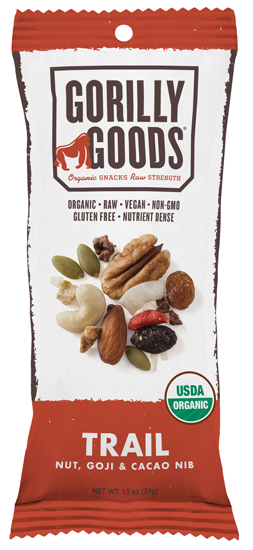 With more than 70% of all products in the shelf-stable juice/drinks, snack bars, yogurt, ready-to-eat cereal, salad dressings, bread/buns, and condiment categories having added sugar, they’re most likely to be impacted by the U.S. Food and Drug Administration’s new sugar labeling regulations (Nielsen 2017b).
With more than 70% of all products in the shelf-stable juice/drinks, snack bars, yogurt, ready-to-eat cereal, salad dressings, bread/buns, and condiment categories having added sugar, they’re most likely to be impacted by the U.S. Food and Drug Administration’s new sugar labeling regulations (Nielsen 2017b).
A hormone-free or antibiotic-free claim would make 53% of shoppers more likely to purchase fresh meat; 40% would be influenced by a grass-fed claim, 39% by all-natural, and 33% by organic (Nielsen 2017c).
All-natural is the most influential claim in the deli; one-quarter of natural cheese buyers want cheese with added calcium (IDDBA 2017). Low/no/reduced allergen claims posted the highest gains in the dairy case over the past five years, followed by lower fat, vegetarian, and lactose-free (IDDBA 2017).
With 95% of all items sold in the in-store bakery having no declared health benefit, prominently displaying health benefits is a very big idea (IDDBA 2017). Because “just watching calories” is the most common approach to dieting—practiced by 43% of consumers, low-calorie claims are a missed opportunity (FMI 2016b).
Many sustainable claims are now being perceived as healthy. Two-thirds of adults equate grass-fed with healthy, 62% link it to free-range, 49% to local, and 40% to the term sustainable (Technomic 2016b).
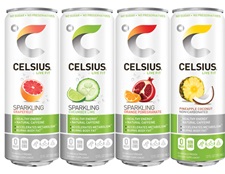 10. Natural Living
10. Natural Living
The desire to live a more natural, chemical free, sustainably focused life is accelerating. Twenty-eight percent of grocery retailers predict natural/organic groceries will grow in 2017 (Springer 2017).
Foods/beverages with an organic claim posted a compound annual growth rate of 14.8% over the past four years; for GM-free, the growth rate was 12.5%; gluten-free, 11.2%; and natural, 11.1%—for Y/E Oct. 29, 2016 (Nielsen 2017a). More than half (53%) of consumers feel that foods with a natural claim taste better; 40% think that is true for organic foods; and 30% believe it to be true of GM-free foods (Technomic 2016b).
Natural, healthy, organic, energy-boosting, low calorie, probiotics/prebiotics, vitamin-/mineral-fortified, low sugar, and high protein are the top 10 hot beverage needs/interest states for 2017 (Jacobsen 2017).
Natural claims drove growth in indulgent categories; sales of natural snacks jumped 17% for Y/E Nov. 26, 2016, versus 7% for regular snacks; for candy, the figures are 17% growth for natural versus 1% for regular; and for cookies, it is 23% for natural versus 7% for regular (Nielsen 2017a).
All-natural was the most sought-after gourmet food claim last year, followed by non-GM and organic (which tied); other sought-after claims included artisanal, ethical, eco-friendly, gluten-free, local, sustainable, and Fair Trade (SFA 2016b).
Across all channels, refrigerated ready-to-drink tea and coffee was the fastest-growing category of natural products, followed by jerky/meat snacks, shelf-stable functional beverages, meal replacements/supplement powders, water, refrigerated condiments, and spirits/mixers (SPINS 2016).
Of the 57% of consumers at least somewhat familiar with the term, 30% say they look for minimally processed foods often, if not all the time; 59% agree that the fewer the ingredients, the healthier an item is (FMI 2016b, Schilling 2017).
One in five retailers say clean label was the strongest wellness trend in 2016 (Springer 2017). Grocery snacks, beverages, packaged foods, frozen, in-store bakery, and meat are the categories in which retailers believe conventional products will remain strong (Springer 2017).
As marketers continue to clean up food labels—and Millennial parents and older seniors dominate the population—expect market demand to swing back toward delivering natural food-based solutions for healthier living and addressing more serious conditions.
At the same time, two new dynamics—households with young children and post-senior adults—will again help center activities around the home similar to the cocooning trend of the 1980s. Today’s food marketers should consider turning their attention to developing a new generation of seriously functional foods/beverages, easy solutions for home entertaining and meal preparation, and an even more culinarily unique generation of on-the-go foods.
A. Elizabeth Sloan, PhD, a professional member of IFT and contributing editor of Food Technology, is president, Sloan Trends Inc., Escondido, Calif. ([email protected]).
Latest News

Vickie Kloeris Shares NASA Experiences in New Book, Consumers Are Confused About Processed Foods’ Definition
Innovations, research, and insights in food science, product development, and consumer trends.

Top 10 Functional Food Trends: Reinventing Wellness
Consumer health challenges, mounting interest in food as medicine, and the blurring line between foods and supplements will spawn functional food and beverage opportunities.

Production Capacity Expands for Food to Fight Malnutrition
Production capacity for ready-to-use therapeutic food Plumpy’Nut at Edesia expands thanks to a Bezos family donation.

Better-for-you products on display at Natural Products Expo West
A photo overview of products shared at the 2024 Natural Products Expo West in Anaheim, Calif.

Natural Product Expo West Attention-Getters: Highlights From the Event
Food Technology Contributing Editor Linda Milo Ohr reports on trends she tracked at Natural Products Expo West 2024.
